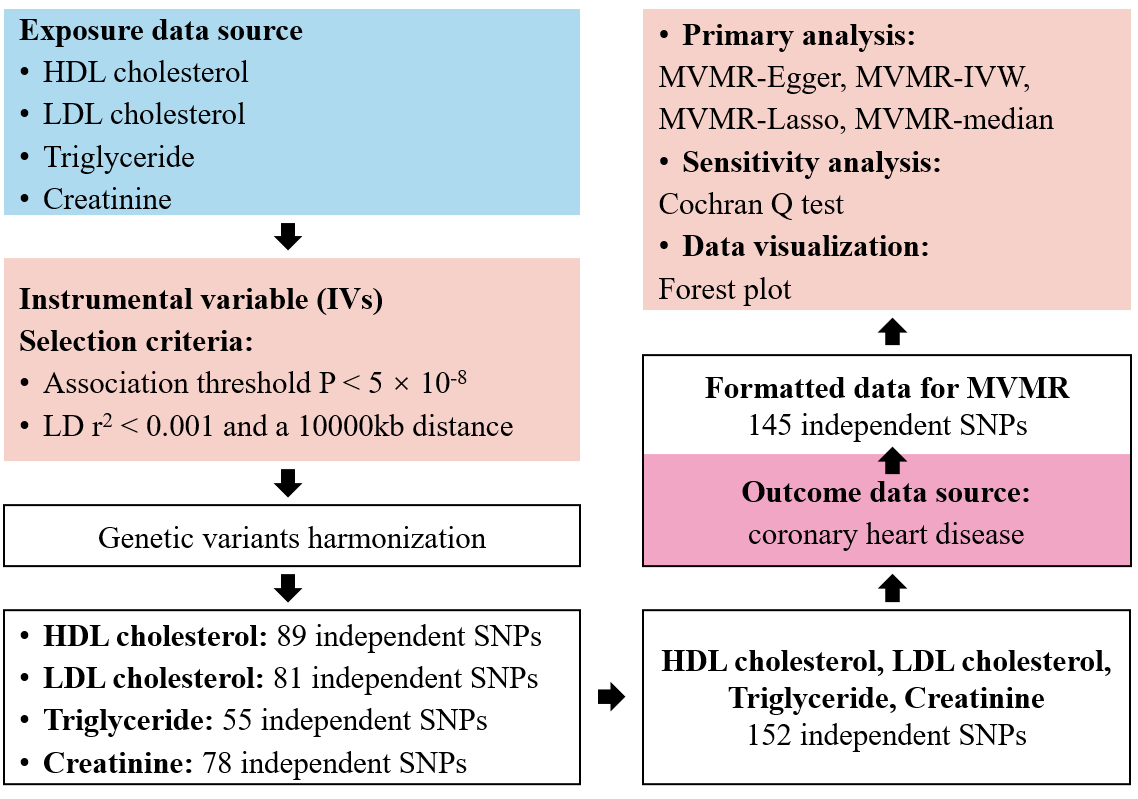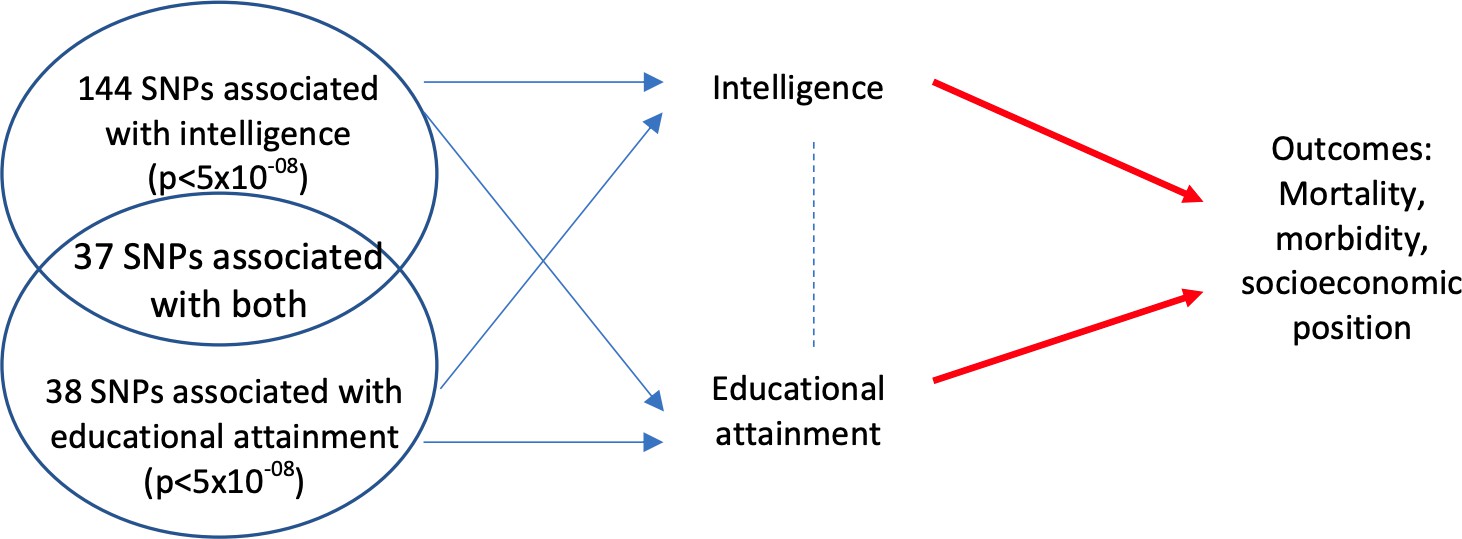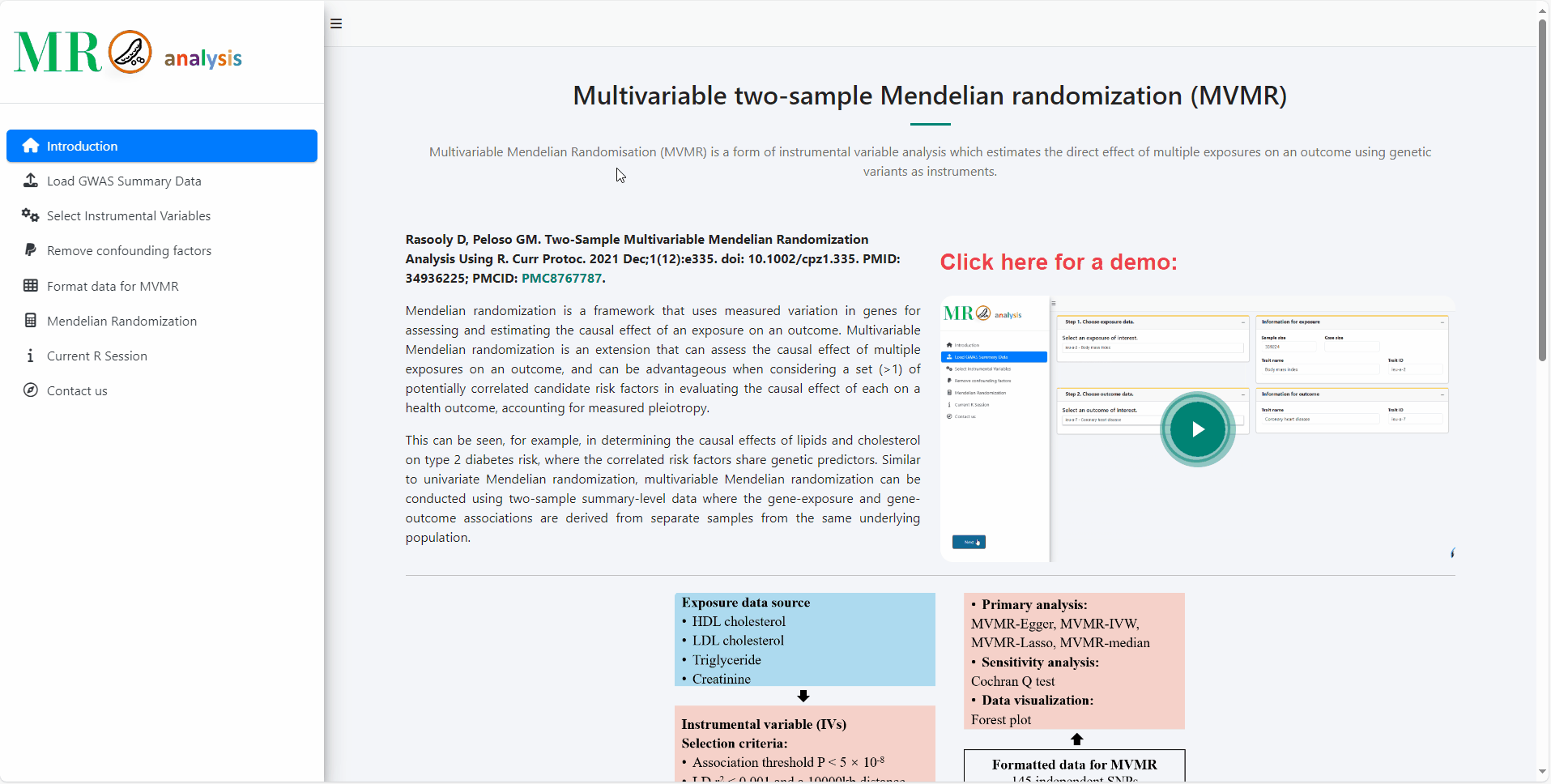Step 7. Collect Information About the Current R Session.
Contact Us
The Centre for Artificial Intelligence Driven Drug Discovery (AIDD) at Macao Polytechnic University
Multivariable Mendelian Randomization
MVMR estimates the direct effect of multiple exposures on an outcome using genetic variants as instruments, enabling assessment of causal effects while accounting for measured pleiotropy
MVMR Conceptual Framework

Analysis Workflow
The workflow for performing MVMR is as follows:
Real-World Example

Multivariable Mendelian randomization estimates the direct effect of intelligence and education on the outcomes.
https://doi.org/10.7554/eLife.43990.004
The direct effect (red arrow) excludes any effect of either intelligence (or education) that is mediated via education (intelligence) on the outcome. It requires genetic variation that explains a sufficient proportion of the variation in intelligence and education conditional on the other trait (Davey Smith and Hemani, 2014). It uses a set of SNPs that associate with intelligence and/or education at p<5×10−08.
Critical Considerations
Essential guidelines for responsible MVMR analysis and interpretation
Methodological Rigor
While democratizing MR methodology is crucial, atheoretical applications pose significant risks. Avoid randomly selecting exposure-outcome pairs without biological justification or established hypotheses.
Best Practice: Ground analyses in well-defined, evidence-based hypotheses and adhere to established guidelines [1]. Consider biological plausibility, pleiotropic pathways, and implement comprehensive quality control including F-statistics evaluation and heterogeneity assessment.
1. Guidelines for performing Mendelian randomization investigations: update for summer 2023
Evidence Integration
MR results should never be interpreted in isolation. Robust causal inference requires integrating multiple analytical strategies and evidence sources.
Recommended Approach: Combine univariable MR (basic causal relationships), multivariable MR (controlling confounders), and mediation MR (causal pathways) with complementary analyses including colocalization, fine-mapping, and experimental validation. Treat MR as contributory evidence, not definitive proof.
Known Limitations
Methodological constraints require careful consideration during interpretation. Key limitations include population stratification differences, shared genetic architecture assumptions, and horizontal pleiotropy vulnerability.
Critical Issues: Sample overlap bias, differential LD patterns across populations, weak instrument bias, inability to model time-varying effects or non-linear relationships, and challenges in detecting pleiotropic effects using summary statistics. Statistical power depends on instrument strength and GWAS sample dimensions.
Choose exposure data (B).
Information for exposure (B)
Choose exposure data (A).
Information for exposure (A)
Notice
This application supports 2 to 5 exposure variables. Please ensure that the number of exposures you input falls within this range to proceed with the analysis. If you have more than 5 exposure variables, consider selecting or grouping them before running the analysis.
